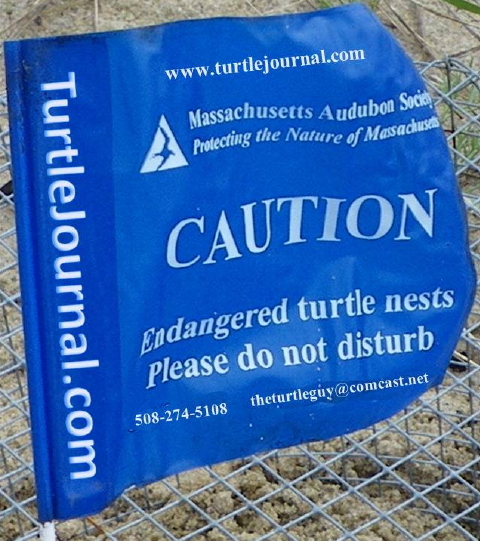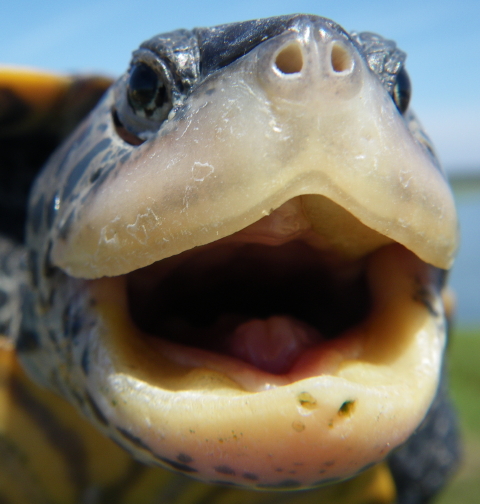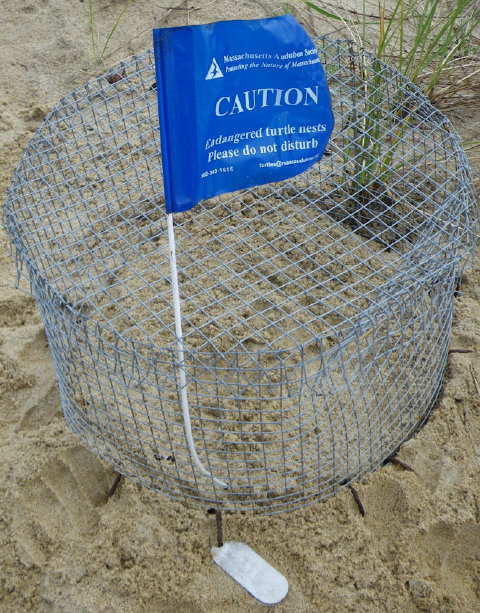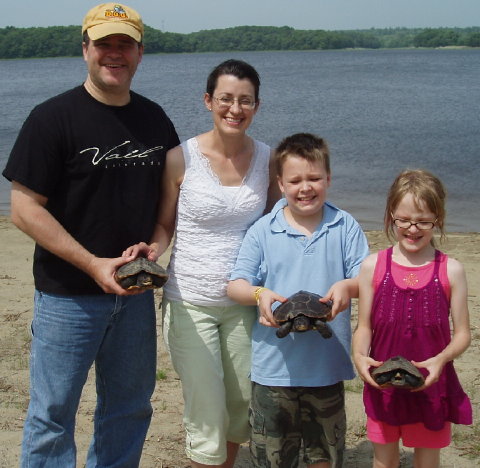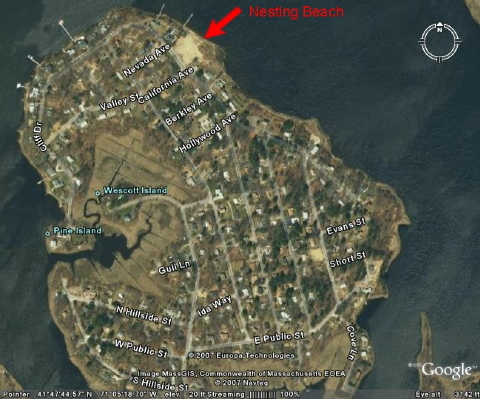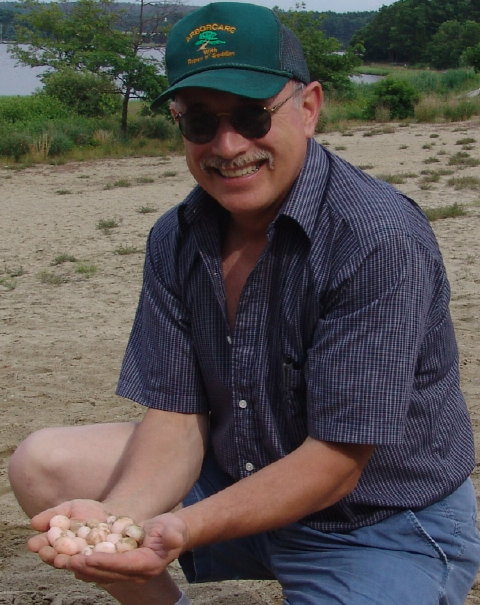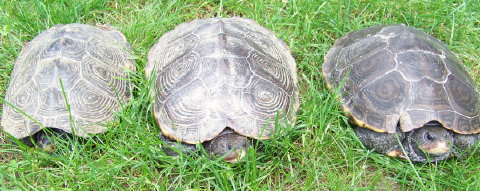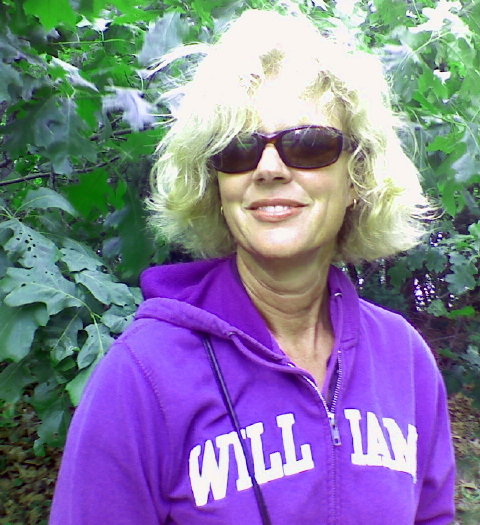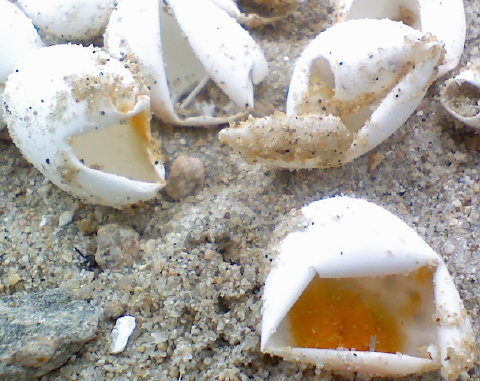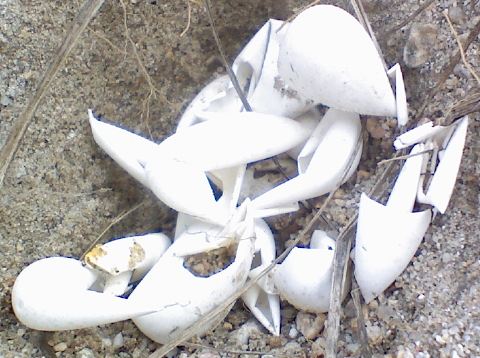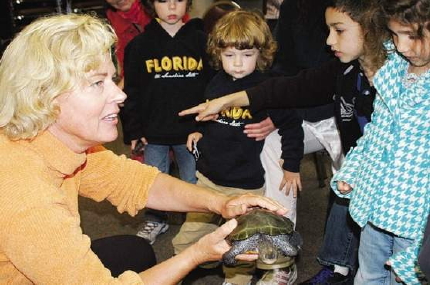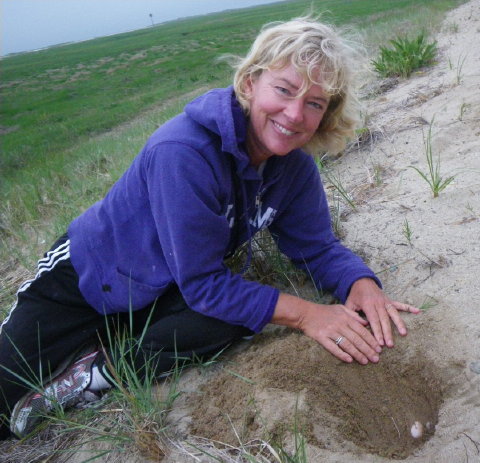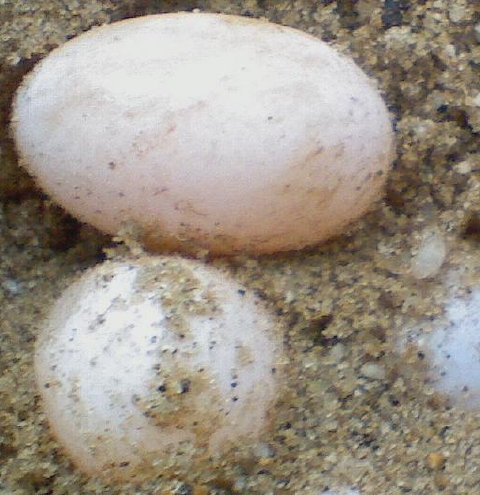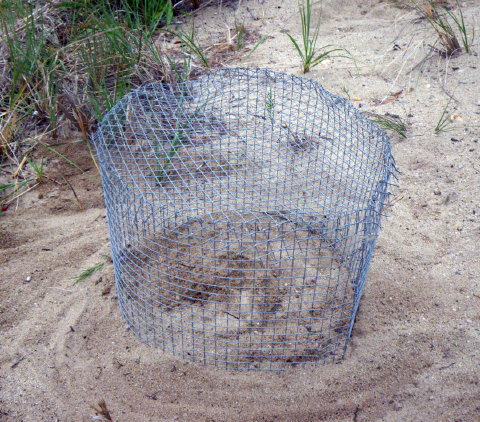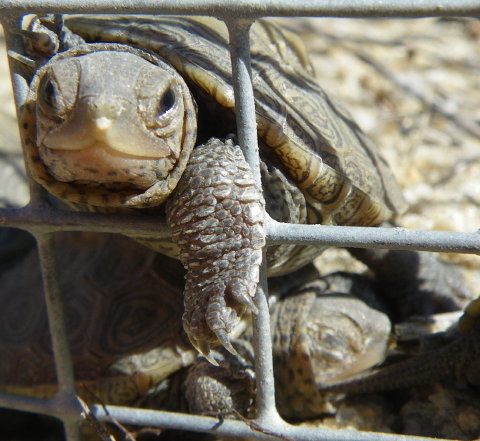Northernmost Diamondback Terrapin
For more than a decade, Turtle Journal has teamed with local residents of Outer Cape Cod and partnered with Mass Audubon’s Wellfleet Bay Wildlife Sanctuary to restore the region’s threatened population of northern diamondback terrapins (Malaclemys terrapin terrapin). These elusive coastal turtles have thrived in the salt marsh systems of Cape Cod for centuries, if not millennia, only coming under existential pressure since the arrival of European settlers and most recently the press of human development into their fragile marsh environment and its abutting sandy uplands. Thankfully, for these magnificent reptiles, intense human exploitation of the Outermost Cape came late enough to allow a small remnant population to survive and affording us the honor to restore it. In neighoring regions such as Massachusetts’ South Coast, civilizaton and modernity have nearly wiped out diamondback terrapins from the habitat.
Freshly Laid Diamondback Terrapin Egg
Not willing or able to settle the long standing argument of which came first the turtle or the egg, Turtle Journal will simply assert that our successful restoration of the Outer Cape terrapin population began with protecting eggs, whether being carried by females or buried in the ground. We focused our conservation initiative on preventing disturbance, injury and death to female terrapins lugging their eggs landward to their natal nesting sites, on finding nests before the predators, and on protecting about 5% of nests from incubation to hatching in the late summer and early fall. We hypothesized that substantially increasing live hatchlings entering the nursery habitat would result in a dramatic increase in recruits into the sub-adult and adult population. This hypothesis proved as correct in practice as it did on the drawing board. Starting withs 9 gram (1/3 ouce) eggs we would create a new world of terrapins.
Freshly Depredated Diamondback Terrapin Egg
We never intended to stop all predation. After all, the mammal population of Outer Cape Cod depends on turtle eggs to feed their spring born young. And turtle survival strategy depends on over-producing eggs on the likelihood that as high as 99% of eggs and hatchlings will be consumed by predators before reaching adulthood. Our goal was to modestly protect perhaps 5% of nests and to assist the successful offspring of natural, unprotected nests to reach the safety of the nursery salt marsh in the fall. Still, on an emotional level, seeing a terrapin egg destroyed by a predator creates a bit of anger and frustration even in the most scientific of the Turtle Journal team.
Protected Diamondback Terrapin Nest on Outer Cape Cod
On the other hand, what brings unbridled joy to Turtle Journal is the accumulation of protected terrapin nests along the uplands of Outer Cape Cod with tiny blue flags snapping in the summer breeze. They offer the promise of survival for the northernmost diamondback terrapin population.
Outer Cape Terrapin Nesting in Tire Tracks
Protecting egg production means protecting mothers.  Some of the favored nesting locations for terrapins on the Outer Cape are dirt roads, especially on sandy Lieutenant Island which has become the densest nesting spot for terrapins perhaps in all of New England. While obviously nesting in the middle of tire tracks on a well traveled summer road can be extremely life threatening for the mother who blends in perfectly with the surroundings, these dirt roads have proven extremely productive for hatchlings. If the female can successfully bury her architecturally sound nest in the hard-packed dirt, our movement across the road with our cars, dogs and garbage keeps predators at bay. Depredation rates in Outer Cape dirt roads can be one tenth the level of predation in isolated dunes. Still, protecting these vulnerable females can be a challenge. We post signs and alert visitors, but the best protection for nesting terrapins comes from vigilant and pro-active residents. Last Friday a great friend and long-time resident of Lieutenant Island literally threw himself in front of speeding workmen who were about to crush a nesting female. Jim waved them off and quipped, “I’d rather have them hit me than her.” Such is the support that these quirky diamondback terrapins have elicited from their co-inhabitants of the island.
Â
Four Saved Eggs from Depredated Terrapin Nest
On Saturday, Turtle Journal discovered the first depredated nest on Lieutenant Island’s Turtle Point. Crestfallen, we saw that the predator had largely wasted the protein, digging up the eggs, cracking them open, but abandoning them unconsumed. Instead, an army of ants darted back and forth across the eggs collecting nutrients. Turtle Journal checked the egg chamber of the depredated nest, and rejoiced in finding four intact, potentially viable eggs still tucked in the bottom edges of the nest. Four eggs that may yield four fall hatchlings! We cleaned and relocated the eggs to a new “salvage” nest where we will incubate eggs from partially depredated nests that we find during the next several weeks.
Northern Diamondback Terrapin
Every terrapin seems to have a story to tell … if we could only understand them. This beautiful female nester from the Outer Cape wanted to tell the tale of how her nest at the dune off the Boathouse Beach path was discovered and protected by Turtle Journal in Saturday afternoon’s rain storm.
Â
Tracking Turtles, Saving Nests
We reached Lieutenant Island’s “Hook” at the northeast corner in early afternoon. Clouds had socked in and the morning’s drizzle had transformed into a hard rain. Just to the east of the Boathouse Beach footpath, we spotted terrapin tracks that were rapidly disappearing in the downpour. We could see how she had crisscrossed the dune, climbing up and slaloming down, stopping every few feet to dig a test hole as she looked for the perfect spot to deposit her eggs. One spot looked particularly lucrative as the most likely site for her nest and our excavation yielded sixteen perfect pink eggs that had been freshly laid within the hour.
Nest 111 on Boathouse Beach Path Dune
Nest #111 with predator excluder cage and blue flag now marks the spot where these sixteen eggs will incubate through June and July and August. We can all watch as the sun’s heat penetrates to the eggs, warming some enough to create females, leaving others as males, and finally incubating them enough to pierce their eggshell and emerge into a brave new world where terrapins once again thrive on Outer Cape Cod.



